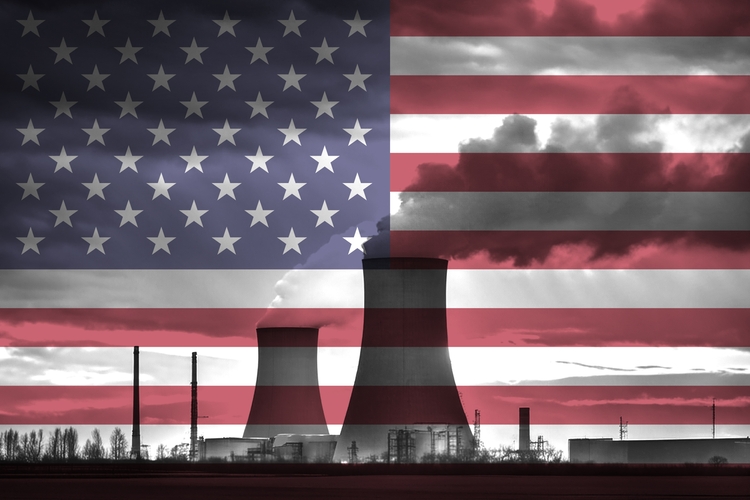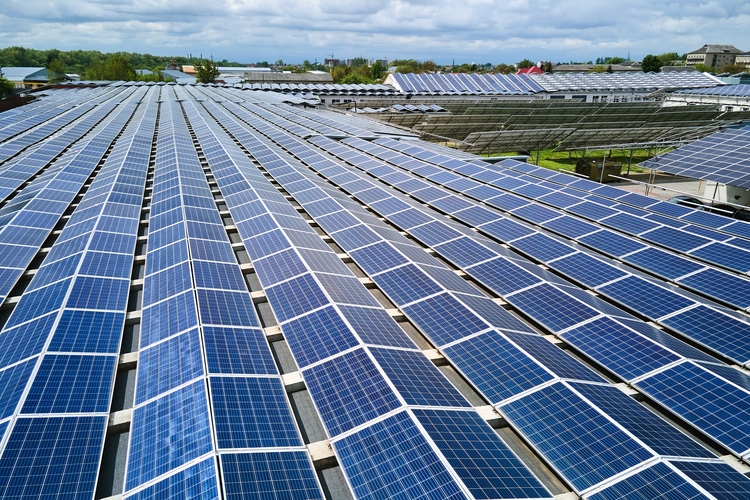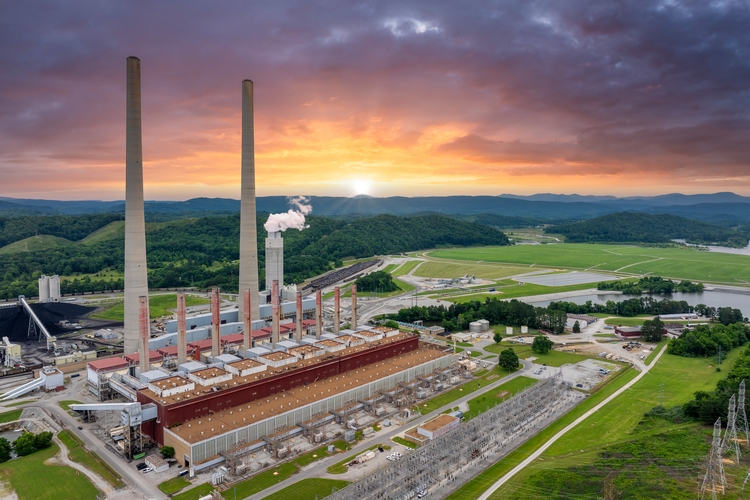
As the US oscillates between clean energy rollbacks and investment into green energy, does the nation have a clear plan under Trump?
By
Every action has an equal and opposite reaction. Newton’s phrase could not be more fitting to describe America’s oscillating stance on climate policy. As Trump withdraws the US from major clean energy commitments – such as the Paris Agreement – look in another direction and you’ll find projects in the nation toiling away to construct offshore wind farms, like those in New York, or solar-storage projects in California.
Enjoying this article? Check out our related reads:
As the game of tug of war continues, public bodies and experts alike have shared their concerns over such a turbulent environment. The US Chamber of Commerce has expressed in no uncertain terms its dissatisfaction with ‘the [Trump] administration’s contradictory approach to energy policy’, while a paper published in The Lancet describes the US’s climate policy as ‘erratic’. It’s clear to see: the road ahead to the future of the US’s energy is one paved with uncertainty.
While Trump continues to rescind funding from climate projects, it may seem inevitable that the US is heading towards a future comprised of fossil fuels and incessant cries of the infamous ‘drill, baby, drill’ mantra. Yet, in reality, the situation is far more complex, with the US continuing to toe the line between clean energy leadership and carbon-heavy dependency.
Clean(er) energy
Despite mounting rollbacks on climate policies under the Trump administration, the clean energy sector is still booming in the US. Accounting for around 15 per cent of global clean energy investment, the US announced or advanced 523 new clean energy projects between August 2022 and February 2024. And in 2023 alone, the industry added 142,000 jobs – a 4.2 per cent increase that was more than double the growth rate of the overall US economy.
Such a trend continued into 2024, where clean energy employment growth was around three times faster than overall US job growth. Since 2020, clean energy and clean vehicle sectors have collectively added more than half a million jobs to the US economy, expanding the total workforce to around 3.56 million people.

The shares of renewables are also notable – in 2024, renewables accounted for more than 90 per cent of all new US electrical generating capacity. Solar alone contributed to 81 per cent of that new capacity. Planned additional construction projects in 2025 are still strongly skewed toward renewables – especially solar and battery, which are projected to make up 81 per cent of new capacity.
For the first time ever, in certain months in 2024, electricity from solar and wind outpaced that from coal. In 2024, solar and wind together produced more electricity than coal.
Carbon-free energy sources that are able to operate 24/7, such as geothermal and nuclear, are also garnering attention in the nation. For example, in 2024, Microsoft signed a 20-year power purchase agreement with Constellation for nuclear energy; Amazon said it would invest $500 million in small modular nuclear reactors, and Google announced plans to purchase power from small modular reactors. Clearly, big players on the global stage are staking a vested interest in renewable energy sources, offering hope for a decarbonised future.
In terms of clean energy manufacturing, certain US states are coming out on top. In 2024, 12 states generated more than 30 per cent of their electricity from wind, solar and geothermal energy. Iowa, South Dakota and Kansas each produced more than 50 per cent of their electricity from wind alone.
Texas has also made significant inroads into renewable energy. In recent years, the state has installed large quantities of solar, wind and battery capacity – far more than any other state. Since 2014, it has seen its solar output grow more than 70-fold, and battery capacity increase by nearly 95-fold.
One reason to explain such an uptick is Texas’s location, with its excellent wind corridors and high solar insolation. With a relatively low population density in rural areas, Texas has more opportunities to begin large-scale generation projects compared to more urban-centric regions.

However, such large-scale projects, like those in Texas, have been threatened by funding cuts, regulatory rollbacks or cancelled permits under the Trump administration. As part of a broader rollback, the US Department of Energy cancelled more than $1 billion of clean energy project funding in Texas. Among the affected grants was a $331.9 million grant to replace natural gas with hydrogen, as well as a $270 million grant for a carbon-capture facility.
In total, funding for four of Texas’s six industrial decarbonisation projects has reportedly been rescinded. Such cuts represent just a small percentage of the total affected clean energy projects in the US. In total, estimates say around 35 privately-driven projects (such as solar farms, clean-tech manufacturing plants or battery gigafactories) have either been ‘closed, cancelled or downsized’ since Trump’s second term began.
The Republican administration also announced the cancellation of $7.6 billion in grants supporting 223 clean energy projects, ranging from hydrogen hubs, grid modernisation, solar access and industrial decarbonisation.
Rollbacks, cuts and ‘drill, baby, drill’
For Trump, a president who has claimed climate change is a ‘scam‘, a ‘hoax’ and the ‘greatest con job ever perpetrated’, tapping into the oil and gas industry seems both an agreeable and profitable decision.
Ten months on from his inauguration, Trump is still vocal about his interest in fossil fuels. Earlier this year, at the annual meeting of the World Economic Forum, Trump emphasised that fossil fuels remain central to his administration’s economic and energy framework.
While promoting clean energy in some sectors, under Trump, the US government is continuing or expanding subsidies or tax incentives benefiting the fossil fuel industry (for example, in carbon capture or relaxed royalty rates). In 2025, the US was the world’s largest oil producer. As well as this, Trump’s legislative package, titled ‘One Big Beautiful Bill’, is reported to include nearly $40 billion in new federal subsidies for fossil fuels in 2025.
On Trump’s first day in office, an executive order was signed titled ‘Unleashing American Energy’, a plan aimed to remove regulatory barriers to oil, gas and coal production. He also declared a national energy emergency, used to justify the fast-tracking of permits for oil, gas and coal projects and the loosening of climate rules viewed as obstacles. Such rules included many Biden or Obama-era climate policies and emissions regulations. For example, the administration has plans to repeal greenhouse gas limits on coal and natural gas power plants.
In addition, the US continues to invest in liquified natural gas projects, pipelines and gas infrastructure to serve global markets. In 2024, fossil fuel supply investments remained a significant share of energy investment in the US.
Another mantra purported by Trump is his infamous ‘drill, baby, drill’ slogan, intended to signal a recommitment to fossil fuels and a promise to remove constraints on exploration, mining and infrastructure development. However, despite Trump’s rhetoric, active drilling has not increased accordingly. In fact, some reports show a drop in oil and gas rigs since Trump came into power. Some argue that producers are hesitant to ramp up drilling due to fears over uncertain returns, infrastructure constraints and market dynamics.
In reality, the limits of geology, pipelines and environmental opposition mean that not every oil and gas expansion plan can go ahead.
So, what is the future?
Ultimately, the US is home to a coexistence of both clean and fossil investments. Energy systems are large-scale, long-lived projects – it’s difficult for policymakers and regulators to make the switch to clean energy overnight. Some fossil fuel investments are ‘locked in’ by existing contracts, supply chains and infrastructure, making it more difficult to navigate out of them.
Renewables, despite their prevalence, are only usable when the sun shines, or when the wind blows. Until battery storage can cover multi-day or seasonal gaps, fossil fuels and natural gas must remain to stabilise electricity supplies.
During the transition period, it’s likely that fossil fuels will continue to underpin renewables, especially since the US has spent more than a century building pipelines, refineries and power plants worth trillions of dollars – a network that the nation doesn’t necessarily want to give up just yet.

Ironically, the clean energy industry also depends on fossil fuels. Manufacturing solar panels, wind turbines, and batteries still requires fossil-fuel-derived energy and petrochemical-based materials. Cargo ships, trucks and mining equipment that deliver vital rare earth metals for batteries often run on diesel.
Running away from fossil fuels would also spell disaster for the millions of Americans who rely on the industry for jobs, revenue and community income. As such, transition policies can offer an agreeable medium.
In short, the US’s energy landscape is a complex one, made all the more difficult by climate policies that are constantly in flux. It remains a challenge to predict the future of one of the world’s biggest energy producers, particularly against the backdrop of continual political turbulence.




